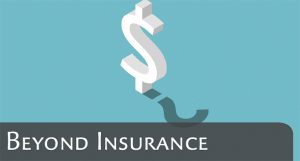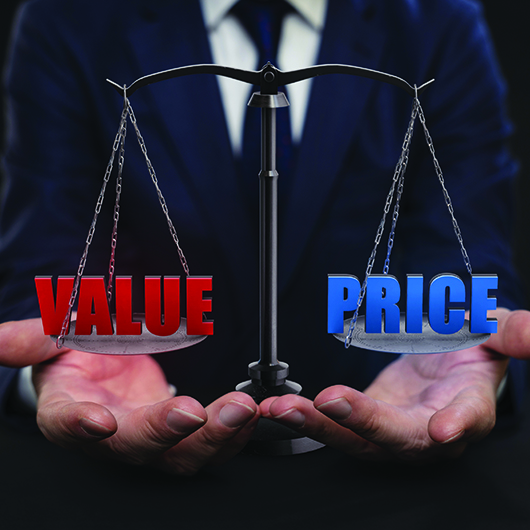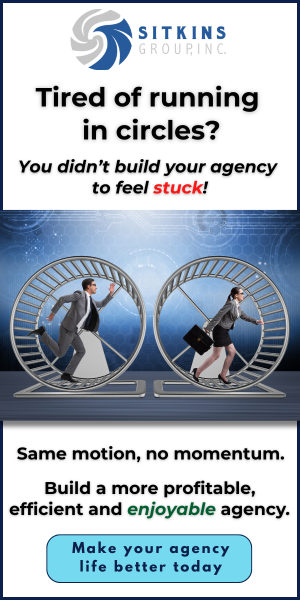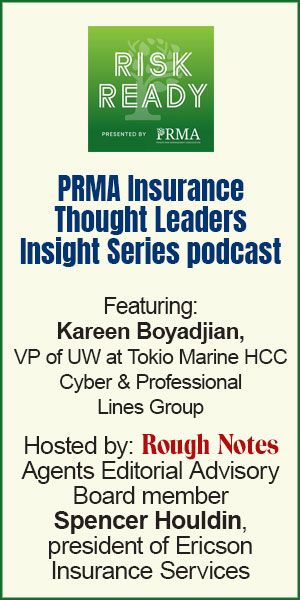 Three producers share insights on when prospects claim your price is too high
Three producers share insights on when prospects claim your price is too high
If you remember one thing, remember this:
No one pays more for something they don’t believe is worth it.
By Carolyn Smith, APR, TRA
If your goal is to be a transactional, commoditized insurance agent … then sure. Sell on price. Be the cheapest option. Compete by racing to the bottom. Become a walking, talking quote machine.
You’ll probably close some business that way. But you won’t keep it.
Because the client you win on price? They’ll leave just as quickly—for someone ten dollars cheaper. It happens year after year.
Here’s why: When all you bring to the table is a number, clients start to treat you like a vending machine. Push a button, get a quote, move on.
But if you want to be more than that—if you want to be a trusted risk consultant whom clients respect, rely on, and renew with—then it’s time to stop selling on price and start selling on value.
And that starts by learning how to handle the number one objection you’ll hear in 2025: “Your price is too high.”
What clients are really telling you
When a prospect says, “That’s too expensive,” nine times out of 10, they’re not saying they can’t afford it. They’re saying:
- “I don’t understand the value.”
- “You haven’t shown me how you’re different.”
- “You sound like every other agent I’ve met.”
Put simply they don’t trust that what you’re offering is worth it.
That’s not something to take personally. It’s something to get curious about.
Because once you understand the real objection, you can handle it the right way—professionally, confidently, and consultatively.
Let’s look at how three standout producers in the Beyond Insurance Global Network (BIGN) are doing just that.
Premiums feel high when value feels low
Wayland Sermons, commercial lines producer at Flatlands Jessup, gets the price objection all the time. When he hears, “The premiums are too high,” he responds, “I understand that cost is a concern. However, this policy offers extensive coverage and significant value. It ensures financial protection, peace of mind, and potential long-term savings, which can far outweigh the initial premium costs.”
Translation?
He acknowledges the concern without validating the objection. Then he flips it—and reframes the conversation around protection, peace of mind, and long-term impact. Wayland’s not arguing. He’s not defending. He’s calmly walking the client into a more strategic mindset.
Because let’s face it: Most clients don’t actually want the cheapest insurance. They want the smartest decision.
And smart producers like Wayland know: When you anchor your value to outcomes, not inputs, the premium stops feeling like a burden and starts feeling like an investment.
So, take a page from Wayland’s playbook:
- Don’t get pulled into a price debate.
- Get the client to zoom out, look long-term, and see what’s really at stake.

Because when they do? Suddenly, “too high” starts sounding like “worth every penny.”
Stop selling insurance. Start solving business problems
Jake Charen, risk architect at Lakeside Insurance, LLC, isn’t interested in being a quote machine. He’s not in the business of competing on price alone—and he’ll tell you that up front. Instead, Jake approaches every client interaction from a position of value, insight, and business alignment.
He operates as a risk advisor, not a transactional salesperson, and makes it clear from the beginning that his role isn’t to “beat a price”—it’s to help business owners protect what they’ve built and think more strategically about risk.
What does he say when a prospect pushes back with, “The premium you provided me with is too high,” or “I’m just looking for the lowest price”? Jake doesn’t jump into a defensive explanation or start slicing coverage to get the number down. Instead, he calmly replies, “Compared to what?” That simple question reframes the entire conversation.
From there, Jake begins to guide the client toward a deeper discussion with a series of pointed, thoughtful questions:
- “Have you ever had a claim denied because of a gap in your coverage?”
- “Has anyone taken the time to evaluate your current risk management strategy?”
- “Do you have any idea what your claims might be costing you in terms of lost productivity, downtime, or reputational damage?”
These aren’t throwaway questions. They’re designed to move the dialogue away from price as the sole factor and toward the broader impact of risk and the cost of being underprepared.
Jake’s approach is about making the invisible visible—showing clients the real financial and operational consequences of unmanaged risk. He knows that once people begin to understand what’s truly at stake, the conversation shifts naturally from premium to protection. From “what’s this going to cost me today?” to “what’s it costing me to not do this right?”
In short, Jake moves the focus:
- From premium to impact
- From price to pain
- From selling insurance to solving businesses’ problems
As Jake sees it, the most valuable and effective producers in today’s market, and certainly mid-Q3 2025 and beyond, are the ones who don’t just quote coverage. They diagnose needs. They lead their clients through a thoughtful process that includes risk assessments, pre-renewal planning, and post-renewal stewardship reviews. They don’t just understand the products; they understand the businesses they’re protecting.
They ask better questions, provide clearer insight, and ultimately build stronger relationships. Not because they’re cheaper—but because they’re indispensable. So how do you kill the price objection? Stop selling insurance as a product and shift the mindset to insurance as a service.
Build a relationship before the objection happens
Jamie Eysenbach, business insurance analyst for Sterling Thompson Company, says something that punches most agents right in the gut:
“If people aren’t buying, it’s most likely because they don’t like you, don’t trust you, or don’t need you … yet. The key is for them to see you as a subject matter expert before their need arises.”
Mic drop.
Jamie doesn’t focus on selling insurance. He exudes confidence, consistency, and clarity.
And he’s crystal clear on this: If you’re constantly getting price objections, it’s probably because you didn’t warm the lead up properly in the first place and they don’t see the value in you.
Jamie would say:
- Prospecting is the time to warm a lead into a relationship.
- Fact-finding and identifying risk are how trust is built.
- Presenting is just the final piece of the puzzle.
So, when you present your price, and someone says “that’s too much,” Jamie would challenge you with this question: “Did you give them enough reasons to believe you’re worth it before you gave the price?”
Because if you didn’t? That objection was inevitable.
The hidden danger of winning on price
Let me tell you a little secret that the top 1% of insurance agents already know: The fastest way to lose a client is to win them on price.
That’s right. You fight to shave $100 off a premium, you get the deal, you feel like a hero … and 12 months later, they shop you for $50. That’s not a client. That’s a ticking time bomb.
And the worst part? Now they’ve experienced your services. They’ve sucked up your time. And you don’t even get a renewal commission because they left. You didn’t gain. You lost.
That’s why the best agencies now focus on lifetime value, not initial savings. They teach clients to think of them as risk advisors, not quote machines.
The script you need to memorize right now
Let’s say your prospect says: “That’s higher than my current premium.”
Try this response, inspired by all three BIGN superstars:
“I hear that. In fact, most of my clients said the same thing before they understood the full picture. Let me ask you something. Would you rather save a little on premium today … and potentially lose a lot more when a claim is denied, a risk is unmanaged, or an exposure is missed? Or would you prefer to have a team that doesn’t just sell you insurance, but helps you proactively manage risk, reduces your total cost over time, and makes sure you’re never blindsided? The premium is just the tip of the iceberg. What we help you control is everything underneath.”
If you remember one thing, remember this: No one pays more for something they don’t believe is worth it.
So, stop defending your price. Start building your value. Start teaching what makes you different. Show them that paying more now often means saving more later—in time, in claims, in lawsuits, in brand reputation.
And if they still say, “I’m going to go with the cheaper guy,” then let them. Because if you’ve done your job, they’ll be back next year when the “cheap” guy ghosts them, or leaves them exposed, or messes up the claim.
You want to build a business that lasts? Then price isn’t your enemy. Commoditization is.
And the only way to rise above that? Position yourself as the irreplaceable advisor … not the replaceable quote.
The author
Carolyn Smith, APR, TRA, chief training officer for Beyond Insurance, creates and delivers transformative programs, including the Trusted Risk Advisor certification, BIGN Producer Boot Camp, and Quest for Success, that have positively impacted the lives and careers of countless professionals. These programs help industry professionals build a career that they love and achieve the success they deserve.




